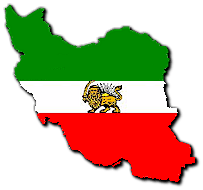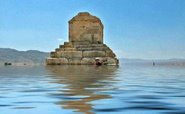Is Breast Milk Safe for Babies?
Breast milk is the best food for babies. Or is it?
Nursing your baby has numerous benefits, including decreased risks for allergies, diabetes, cancer, infections, and arthritis.
Colostrum, which comes in before the milk does, is the first food a newborn gets, and it passes on antibodies (immunoglobulin A) and leukocytes (which destroy disease-causing bacteria and viruses), and it also seals the infant’s highly permeable digestive tract with a barrier which prevents foreign substances from penetrating it. It is a safe and natural vaccine, the way that nature intended it. However, pesticides, heavy metals, and other persistent organic pollutants accumulate in human milk, leading some researchers to question whether the risks of exposure to pollutants in breast milk outweigh the benefits.
Persistent organic pollutants, including organochlorine pesticides such as DDT, polychlorinated dibenzo-p-dioxins (PCDDs), polychlorinated dibenzofurans (PCDFs), polychlorinated biphenyls (PCBs), tend to become concentrated in the food chain over time. Breastfeeding infants, being at the top of the food chain, receive relatively large doses of contaminants. These chemicals have been detected in human milk: bisphenol A, polybrominated diphenyl ethers (PBDEs), hexachlorobenzene, and the cyclodiene pesticides, including dieldrin, heptachlor, and chlordane. The persistent residues of many banned substances are still found in mother’s milk. In the October 2007 issue of Advances in Neonatal Care Journal, nurse–midwife Joanne Jorissen notes that on average, a nursing baby receives about 50 times the daily PCB intake of adults, and are predicted to have cumulative PCB exposures up to 18% higher than those of formula-fed infants. Up to 90% of human exposure to persistent and fat-soluble dioxin-like chemicals, is attributed to dietary intake. Red meat, dairy products, and fish contain higher concentrations, and meat eaters tend to have higher levels than mothers eating a vegetarian diet. To reduce a baby’s exposure, mothers can change their diets during pregnancy and breastfeeding, limiting the exposure to these chemicals during the critical times of growth and development. Nursing mothers that maintain their weight can also reduce the level of contaminants in their milk because the mobilization of fat stores is lessened.
Don’t give up on breastfeeding because of pollutants in breast milk:
“There is much evidence that breastfeeding plays a role in attenuating and reversing exposure to neurotoxic substrates, including lead and mercury. Breastfeeding may also indirectly affect the metabolism of mercury in exposed infants by increasing elimination of the toxic metal.” - University of Brasília nutrition professor José G. Dórea
The World Health Organization, the Academy of Pediatrics, and the US Surgeon General remain overwhelmingly in favor of breastfeeding, even with the evidence of contaminants in mother’s milk, believing the benefits to outweigh the risks to infants.
“To date, no environmental contaminant, except in situations of acute poisoning, has been found to cause more harm to infants than does lack of breastfeeding. I have seen no data that would argue against breastfeeding, even in the presence of today’s levels of environmental toxicants.” - physician–epidemiologist Miriam Labbok, Director of the Carolina Breastfeeding Institute
La Leche League gives these tips to reduce the levels of chemicals in the mother’s body -
- Avoid smoking cigarettes and drinking alcohol
- Be aware when purchasing homes and buildings that have been treated with pesticides for termites or older homes that might have lead-based paints.
- Eat a variety of foods low in animal fats, and remove skin and excess fat from meats and poultry. Avoiding high-fat dairy products may reduce the potential burden of fat-soluble contaminants.
- Increase consumption of grains, fruits and vegetables. Wash and peel fruits and vegetables to help eliminate the hazard of pesticide residues on the skin. Eat food grown without fertilizer or pesticide application.
- Avoid fish such as swordfish and shark or freshwater fish from waters reported as contaminated by local health agencies.
- Limit exposure to chemicals such as solvents found in paints, non-water based glues, furniture strippers, nail polish, and gasoline fumes.
- Remove the plastic cover of dry cleaned clothing, and air out the garments in a room with open windows for 12-24 hours.
- Try to avoid contact with incinerator discharge, preserved wood, or produce grown near incinerators.
- Attempt to avoid occupational exposure to chemical contaminant.
- Encourage other family members to be sensitive to contaminant residue they may inadvertently bring into the home.
Yes, breast is still best!
For more information on chemical pollution in mother’s milk, see the Natural Resources Defense Council page here: NRDC Healthy Milk, Healthy Baby


























 اخبار مربوط به زندانیان سیاسی و نقض حقوق بشر
اخبار مربوط به زندانیان سیاسی و نقض حقوق بشر

















 Tulips in Holland
Tulips in Holland












No comments:
Post a Comment